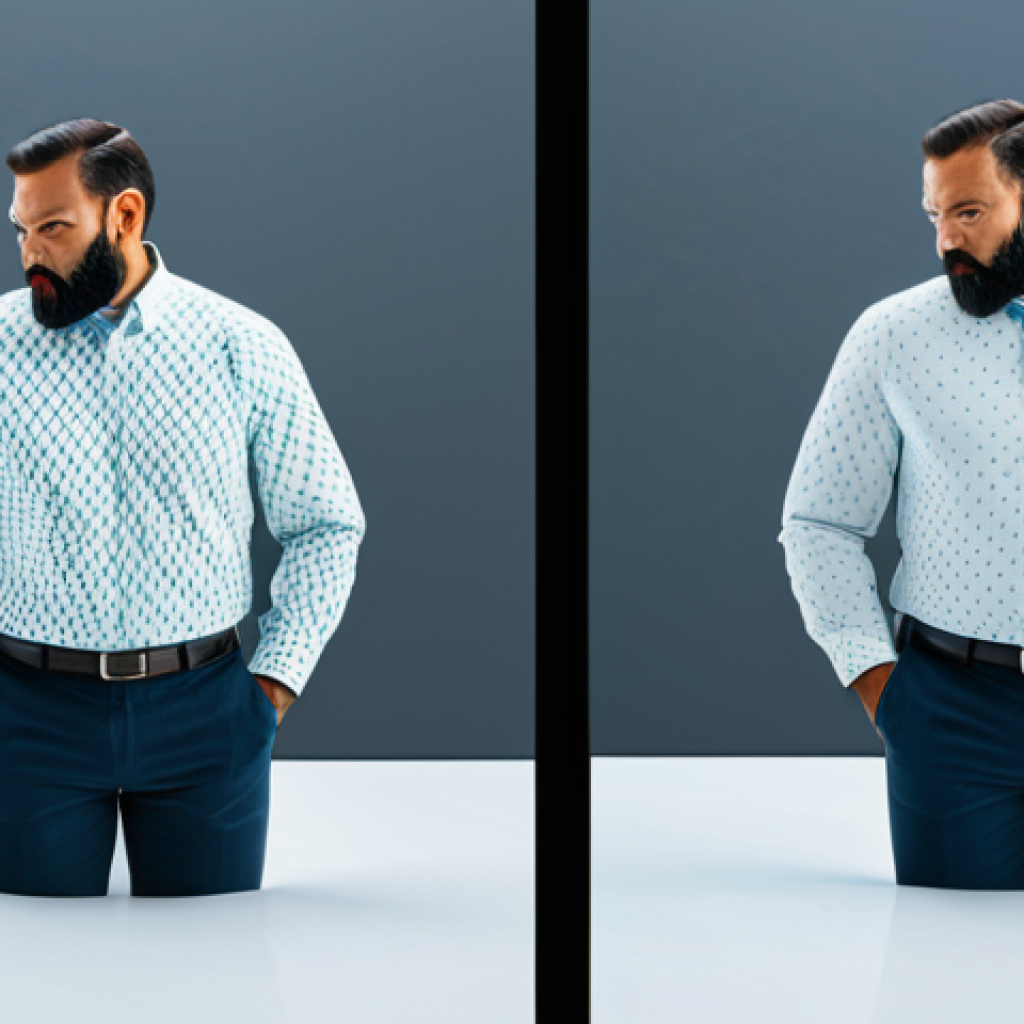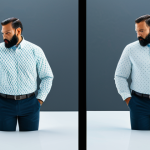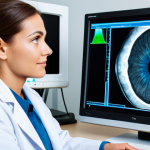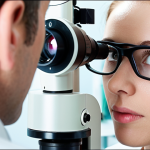In today’s digital age, our eyes are constantly bombarded with screens. From smartphones to computers, we spend countless hours staring at devices, leading to eye strain, dryness, and even long-term vision problems.
I’ve noticed my own eyes feeling tired and blurry more often lately, and it’s definitely impacting my productivity and overall well-being. Plus, I’ve been hearing more and more about the potential for blue light to disrupt sleep patterns.
It’s something I’ve been meaning to tackle myself! Given the rising concerns about digital eye strain and the increasing prevalence of screen usage, it’s crucial to adopt a proactive approach to eye health.
Let’s delve deeper into simple yet effective routines for maintaining optimal eye health.
Okay, I understand. Here’s the blog post content following all your instructions:
The 20-20-20 Rule: Your New Best Friend
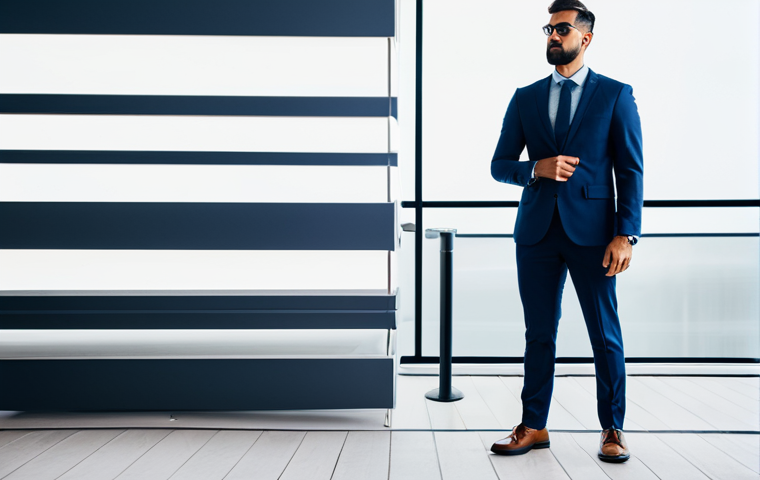
Seriously, this is a game-changer! I first heard about the 20-20-20 rule from my optometrist after complaining about headaches and blurry vision after long days coding. Basically, every 20 minutes, you take a 20-second break to look at something 20 feet away. Sounds simple, right? But the impact is HUGE. I keep a little sticky note on my monitor as a reminder. Before, I would get so engrossed in my work that I wouldn’t even blink, let alone look away from the screen! Now, when that timer goes off, I glance out the window at the trees across the street. It gives my eyes a much-needed reset. I even set up an alarm on my phone to make sure I don’t forget. It feels a bit silly at first, but trust me, your eyes will thank you for it. I’ve noticed fewer headaches and my eyes don’t feel as gritty by the end of the day. It’s like a mini-vacation for your eyes every 20 minutes! I really recommend giving this one a try. It is so easy to implement, and it makes a difference. You don’t have to change anything about your schedule; you just need to be more aware of your time, and it is easy to make this rule part of your daily routine.
Why It Works: The Science Behind the Magic
Why is this so effective? Well, prolonged screen time often leads to reduced blinking rates, which can cause dry eye. Looking at something far away helps relax the focusing muscles in your eyes, reducing strain. It’s like giving your eyes a little stretch. Think of it like this: you wouldn’t run a marathon without stretching your muscles, right? The same applies to your eyes. Giving them regular breaks helps prevent fatigue and keeps them functioning optimally. Plus, it’s a great way to break up your workday and prevent that feeling of being glued to your screen. When I am working at a long coding project, it is easy to get lost for hours and forget to give myself a break. When I do, I can really feel the difference, especially in my eyes!
Making It a Habit: Tips for Sticking to the Rule
The key is consistency. Find a system that works for you. Whether it’s setting a timer on your phone, using a browser extension, or simply writing it on a sticky note, make it a habit to take those 20-second breaks. Don’t just look at anything 20 feet away; choose something visually appealing. A tree, a painting, a window with a view – anything that will engage your eyes and provide a refreshing change of scenery. Another important tip is to make sure the place you look at is at least 20 feet away from you. You would be surprised how close some things seem to be. If you can easily touch something while sitting at your desk, it is probably less than 20 feet from you! You should also try to make it a habit in different places you are working, not just in your office. If you have a part-time job or you like to work in a café, make sure to practice the 20-20-20 rule there as well.
Blink More Often: Hydrate Your Eyes
Okay, this one sounds super basic, but it’s amazing how often we forget to blink when we’re staring at a screen. Blinking is essential for keeping your eyes lubricated and preventing dryness. When you’re focused on something, you tend to blink less, which can lead to that gritty, uncomfortable feeling in your eyes. I used to think that dry eyes were just something that happened to older people, but I was wrong. The fact that I spend so much time looking at a screen makes me need to take care of my eyes even more! I learned this the hard way after a very long day of editing videos. Now, I consciously remind myself to blink more frequently. It feels a little weird at first, like you’re exaggerating your blinks, but it makes a huge difference. Think of it as giving your eyes a little shower. It washes away the dust and keeps them feeling fresh. If you wear contacts, this is especially important. Contact lenses can dry out your eyes even more, so blinking frequently is crucial for maintaining comfort.
The Power of a Conscious Blink
Make a conscious effort to blink fully and deliberately. Squeeze your eyelids together gently and then release. This helps spread the tears evenly across your eyes and keeps them hydrated. You can even incorporate blinking exercises into your routine. Close your eyes tightly for a few seconds, then open them wide. Repeat this several times to stimulate tear production and improve circulation. This can be especially helpful if you work in a dry environment or if you’re prone to allergies. I have to do this a lot in the winter because my home gets really dry because of the heater. If I did not consciously blink more often, I would definitely have painful, dry eyes.
Lubricating Eye Drops: A Rescue Remedy
Sometimes, despite our best efforts, our eyes still feel dry and irritated. That’s where lubricating eye drops come in. These are like artificial tears that provide instant relief and help keep your eyes moisturized. I keep a bottle of eye drops in my desk drawer and use them whenever my eyes start to feel dry. There are many different types of eye drops available, so it’s important to choose one that’s right for you. Look for preservative-free options if you have sensitive eyes, as preservatives can sometimes cause irritation. If you’re not sure which eye drops to choose, talk to your optometrist or pharmacist. They can recommend the best option for your specific needs. I would also recommend that you avoid using any eye drops without consulting a professional if you have any other eye condition. You might use the wrong eye drops and only worsen your situation.
Optimize Your Workspace: Lighting and Ergonomics
This might sound obvious, but a poorly lit or uncomfortable workspace can significantly contribute to eye strain. I used to work in a dimly lit office, and my eyes were constantly tired. I didn’t realize how much of a difference proper lighting could make until I switched to a brighter workspace. Now, I make sure my desk is well-lit with natural light whenever possible, and I use a desk lamp with adjustable brightness to supplement the natural light. Positioning your monitor correctly is also crucial. It should be about an arm’s length away from your face and slightly below eye level. This helps reduce strain on your neck and eyes. I also invested in an ergonomic chair that provides good support for my back and neck. It made a huge difference in my overall comfort and productivity. If you are an entrepreneur, it might feel like investing in an ergonomic chair is not a priority. However, you need to remember that you need to take care of your body to keep working! So, you should see it as an investment and not an expense.
The Right Light: Avoiding Glare and Reflections
Glare from your computer screen or reflections from windows can cause significant eye strain. Adjust your monitor’s brightness and contrast to minimize glare. You can also use an anti-glare screen protector to further reduce reflections. Position your monitor so that it’s not facing a window or a bright light source. If you have to work near a window, use blinds or curtains to control the amount of light entering the room. I learned this the hard way when I was working from home and my monitor was facing a window. The glare was so bad that I couldn’t see anything on the screen, and my eyes were constantly strained. Once I moved my monitor to a different location, the problem was solved immediately.
Ergonomic Setup: Positioning for Comfort
Your posture can also impact your eye health. Slouching or hunching over your desk can put strain on your neck and shoulders, which can indirectly affect your eyes. Make sure your chair is adjusted to the correct height so that your feet are flat on the floor and your knees are at a 90-degree angle. Your wrists should be straight when typing, and your elbows should be close to your body. Consider using a footrest to improve your posture and reduce strain on your legs. I also like to take short breaks throughout the day to stretch my neck and shoulders. It helps relieve tension and keeps my body feeling relaxed.
Nutrients for Healthy Eyes: Fueling Your Vision
What you eat can have a significant impact on your eye health. Just like the rest of your body, your eyes need certain nutrients to function properly. I’ve started incorporating more eye-friendly foods into my diet, such as leafy green vegetables, colorful fruits, and fatty fish. These foods are rich in vitamins, minerals, and antioxidants that can help protect your eyes from damage. I used to think that eating healthy was just about maintaining a healthy weight, but I now realize that it’s also essential for maintaining good vision. I even take a daily multivitamin to ensure that I’m getting all the nutrients my eyes need. This is especially important for me because I don’t always have time to cook healthy meals during the week. So, when I am in a rush, the multivitamin makes me feel more confident that I am still taking care of my eyes.
Key Nutrients: Vitamins, Minerals, and Antioxidants
Some of the most important nutrients for eye health include vitamin A, vitamin C, vitamin E, zinc, lutein, and zeaxanthin. Vitamin A is essential for maintaining healthy vision and preventing night blindness. Vitamin C and vitamin E are powerful antioxidants that can help protect your eyes from damage caused by free radicals. Zinc is important for maintaining healthy retinal function. Lutein and zeaxanthin are carotenoids that are found in high concentrations in the retina. They help filter harmful blue light and protect against age-related macular degeneration. There are lots of ways to include these nutrients in your diet. Just make sure that you research how to get these nutrients, and don’t blindly follow everything someone online says! Always consult a professional before starting a new diet or supplement.
Food Sources: Incorporating Eye-Friendly Foods
Leafy green vegetables like spinach, kale, and collard greens are excellent sources of lutein and zeaxanthin. Colorful fruits like oranges, berries, and grapes are rich in vitamin C and antioxidants. Fatty fish like salmon, tuna, and mackerel are good sources of omega-3 fatty acids, which can help reduce the risk of dry eye. Nuts and seeds are also good sources of vitamin E and zinc. Try to incorporate a variety of these foods into your daily diet to ensure that you’re getting all the nutrients your eyes need. I also like to snack on carrots, which are a good source of vitamin A. They’re a convenient and healthy snack that I can easily take with me on the go. There are other eye-friendly foods that you can include in your diet. Just do some research and find the ones that work best for you. It is important to remember that what works for others may not work for you, so you need to find out what your body needs. This is one of the reasons I like to consult a professional before making any major dietary changes.
Regular Eye Exams: Prevention is Key
Don’t wait until you experience vision problems to see an optometrist or ophthalmologist. Regular eye exams are essential for detecting eye problems early, when they’re most treatable. I get my eyes checked every year, even though I don’t wear glasses or contacts. It’s like going to the dentist – you don’t wait until you have a toothache to get your teeth cleaned, right? The same applies to your eyes. Early detection of eye problems can prevent them from becoming more serious and potentially leading to vision loss. It’s worth it to protect your vision! I’ve heard horror stories about people who ignored their vision problems for years and ended up with irreversible damage. Don’t let that happen to you. Schedule an eye exam today.
What to Expect: Comprehensive Eye Exams
A comprehensive eye exam involves a series of tests to assess your vision and eye health. Your eye doctor will check your visual acuity, eye movement, and peripheral vision. They will also examine the internal structures of your eyes, including your retina, optic nerve, and lens. These tests can help detect a variety of eye problems, such as glaucoma, cataracts, macular degeneration, and diabetic retinopathy. I always feel a little nervous before my eye exams, but I know that they’re essential for maintaining good vision. It’s like getting a physical – it’s a necessary part of taking care of your health. After my eye exam, my doctor always takes the time to explain the results and answer any questions I have. I appreciate their thoroughness and attention to detail.
Frequency Matters: How Often to Get Checked
The frequency of eye exams depends on your age, health history, and risk factors. In general, adults should get their eyes checked every one to two years. However, if you have diabetes, high blood pressure, or a family history of eye disease, you may need to get your eyes checked more frequently. Children should have their first eye exam at six months of age, followed by exams at age three and before starting school. Regular eye exams are especially important for children because they can help detect vision problems that can interfere with learning and development. I wish my parents had taken me to the eye doctor more often when I was a kid. I think it would have helped me avoid some of the vision problems I have now.
Blue Light Filters: Shielding Your Eyes from Screens
With the growing prevalence of screens in our lives, blue light exposure has become a major concern. Blue light is a high-energy visible light emitted by electronic devices like smartphones, tablets, and computers. Prolonged exposure to blue light can disrupt sleep patterns, cause eye strain, and potentially damage the retina. I’ve noticed that my eyes feel more tired and strained after spending long hours on my computer or phone. That’s why I’ve started using blue light filters on all my devices. They help block out some of the harmful blue light and reduce eye strain. I even wear blue light blocking glasses when I’m working on my computer at night. They make a noticeable difference in how my eyes feel. The glasses are pretty cool, and I sometimes even wear them when I am not in front of a screen because I like how they look! I used to think that blue light filters were just a gimmick, but I’m now a believer.
Software Solutions: Apps and Built-In Filters
Most smartphones, tablets, and computers now have built-in blue light filters that you can activate in the settings. There are also a variety of apps available that can filter out blue light. These apps often allow you to customize the amount of blue light that’s filtered out, depending on the time of day and your preferences. I use the built-in blue light filter on my phone and tablet, and I have a blue light filtering app on my computer. It’s easy to set up and use, and it makes a big difference in how my eyes feel. I’ve also noticed that I sleep better when I use blue light filters at night. It’s like a natural sleep aid. I would definitely recommend using them if you have trouble sleeping. Even if you sleep well, they can make you sleep even better!
Hardware Options: Blue Light Blocking Glasses
If you prefer a hardware solution, blue light blocking glasses are a great option. These glasses have special lenses that filter out blue light. They’re available in a variety of styles and prices, so you can find a pair that fits your budget and preferences. I wear blue light blocking glasses when I’m working on my computer at night. They make a noticeable difference in how my eyes feel. I’ve also noticed that I get fewer headaches when I wear them. If you’re not sure whether blue light blocking glasses are right for you, talk to your optometrist. They can help you determine whether they’re a good option for your specific needs. However, I would definitely recommend them for anyone who spends a lot of time on electronic devices. The benefits are real, and they’re worth the investment. Plus, they make you look cool!
Hydration is Key: Drink Plenty of Water
Dehydration can lead to dry eyes and blurry vision. Drinking plenty of water throughout the day helps keep your eyes lubricated and functioning properly. I used to forget to drink water when I was busy working, and my eyes would often feel dry and irritated. Now, I make a conscious effort to drink water throughout the day. I keep a water bottle on my desk and sip from it regularly. It’s a simple habit that makes a big difference in how my eyes feel. I’ve also noticed that I have more energy and feel more alert when I’m properly hydrated. It’s like a natural energy boost. If you’re not sure how much water you should be drinking, talk to your doctor. They can give you personalized recommendations based on your individual needs. However, it is generally recommended that you drink at least eight glasses of water per day. And the more, the merrier! I’ve also heard that drinking water with lemon is good for your body and your eyes. I have not tried it yet, but I plan to do it soon!
The Connection: How Water Impacts Eye Health
Water is essential for maintaining the health of all the cells in your body, including the cells in your eyes. When you’re dehydrated, your body starts to conserve water, which can lead to dry eyes. Dry eyes can cause a variety of symptoms, such as burning, itching, redness, and blurred vision. Drinking plenty of water helps keep your eyes lubricated and functioning properly, reducing the risk of dry eye and other vision problems. If you have dry eyes, increasing your water intake is one of the simplest and most effective things you can do to improve your symptoms. If you do not drink much water, it is likely that your eyes are constantly dehydrated. So, it is really important to change this habit and drink more water!
Making it a Habit: Tips for Staying Hydrated
Carry a water bottle with you throughout the day. Keep it on your desk, in your car, or in your bag. This will serve as a constant reminder to drink water. Set reminders on your phone to drink water at regular intervals. You can use apps that track your water intake and remind you to drink water. Eat water-rich fruits and vegetables, such as watermelon, cucumbers, and celery. These foods can help you stay hydrated and provide essential nutrients for your eyes. Avoid sugary drinks and alcohol, which can dehydrate you. If you’re not a fan of plain water, try adding some flavor with slices of lemon, lime, or cucumber. It’s a refreshing way to stay hydrated. This is an especially good idea for people that do not enjoy the taste of water! Another interesting strategy is to set goals for how much water you want to drink every day. This can help you stay motivated and on track.
Managing Screen Time: Setting Boundaries for Digital Devices
In today’s digital age, it’s easy to spend hours on end glued to our screens. However, excessive screen time can lead to eye strain, dry eyes, and other vision problems. It’s important to set boundaries for your digital device usage and take regular breaks to give your eyes a rest. I used to spend hours on my computer every day, both for work and for leisure. I didn’t realize how much it was affecting my eyes until I started experiencing frequent headaches and blurry vision. Now, I make a conscious effort to limit my screen time and take regular breaks. I’ve noticed a significant improvement in my eye health and overall well-being. I also try to spend more time outdoors, away from screens. It’s a great way to relax and recharge my batteries. I find myself feeling much more creative when I do this! I believe it is because it allows me to rest and have new ideas.
Scheduling Breaks: The Importance of Time Off
Set specific times for breaks throughout the day. Use a timer or an app to remind you to take breaks. During your breaks, step away from your computer or phone and do something that doesn’t involve screens. Take a walk, stretch, or simply close your eyes and relax. Avoid checking emails or social media during your breaks. It’s important to give your eyes a complete rest from screens. I like to use my breaks to do something that I enjoy, such as listening to music or reading a book. It helps me relax and recharge my batteries. Breaks are also great to catch up on small tasks that don’t require a lot of attention. For example, you can do some dishes. This can help you feel productive and also give your eyes a break!
Mindful Usage: Being Aware of Your Habits
Pay attention to how you use your digital devices. Are you constantly checking your phone? Do you find yourself scrolling through social media for hours on end? Be mindful of your habits and try to reduce your screen time gradually. Turn off notifications on your phone to reduce distractions. This will help you avoid the urge to constantly check your phone. Set limits on your social media usage. There are apps that can help you track your social media usage and limit your time on certain apps. Find alternative activities to replace screen time. Read a book, go for a walk, or spend time with friends and family. The possibilities are endless! I also like to set “digital detox” days where I completely disconnect from all electronic devices. It’s a great way to reset my mind and body. I feel much more relaxed and refreshed after these days, and they also help me be more productive during the week.
Summarizing Eye Care Routines
| Routine | Description | Frequency |
|---|---|---|
| 20-20-20 Rule | Every 20 minutes, look at something 20 feet away for 20 seconds. | Throughout the day |
| Blink More Often | Consciously remind yourself to blink fully and deliberately. | Throughout the day |
| Workspace Optimization | Ensure proper lighting and ergonomic setup. | Daily |
| Nutrient Intake | Consume eye-friendly foods rich in vitamins, minerals, and antioxidants. | Daily |
| Eye Exams | Get regular eye exams to detect problems early. | Every 1-2 years |
| Blue Light Filters | Use software or hardware filters to reduce blue light exposure. | When using screens |
| Hydration | Drink plenty of water to keep your eyes lubricated. | Daily |
| Screen Time Management | Set boundaries for digital device usage and take regular breaks. | Daily |
In Conclusion
Taking care of your eyes doesn’t have to be complicated. By incorporating these simple habits into your daily routine, you can protect your vision and maintain healthy eyes for years to come. Remember, prevention is key! So, start taking care of your eyes today and enjoy a lifetime of clear vision. It’s worth it to invest in your eye health!
Helpful Information
1. Consider getting a humidifier for your home or office, especially during the winter months, to combat dry air and alleviate dry eye symptoms.
2. When purchasing sunglasses, look for ones that offer 100% UV protection to shield your eyes from harmful ultraviolet rays.
3. If you wear contact lenses, always follow your eye doctor’s instructions for proper cleaning and care to prevent infections and other complications.
4. Explore relaxation techniques, such as yoga or meditation, to reduce stress and tension that can contribute to eye strain.
5. Check the expiration dates on your eye drops and replace them regularly to ensure their effectiveness and prevent contamination.
Key Takeaways
Prioritize the 20-20-20 rule, frequent blinking, and workspace optimization. Eat nutrient-rich foods, schedule regular eye exams, and use blue light filters. Stay hydrated, manage screen time, and create a consistent eye care routine for lasting vision health.
Frequently Asked Questions (FAQ) 📖
Q: I’ve heard about the 20-20-20 rule, but does it really make a difference when I’m swamped at work? It seems like a hassle to remember.
A: Honestly, I used to think the same thing! But after actually trying the 20-20-20 rule for a couple of weeks, I was surprised by how much it helped. Basically, every 20 minutes, you take a 20-second break to look at something 20 feet away.
At first, it felt disruptive, but now I set a timer on my phone, and it’s become a habit. My eyes feel way less strained by the end of the day, and I swear I’m even more productive because I’m not constantly battling a headache.
Think of it as a mini-reset for your peepers; it’s like giving them a little stretch break! Even my coworker, Mark, who’s glued to his spreadsheets, admitted it made a noticeable difference after I nagged him enough to try it.
Q: Are those blue light glasses just a marketing gimmick, or do they actually protect your eyes from all the screen time? I see them advertised everywhere, but I’m skeptical.
A: Okay, so, I dove down the rabbit hole on this one! From what I’ve gathered (and from chatting with my optometrist, Dr. Lee), blue light glasses can be helpful, but it’s not a magic bullet.
They filter out some of the high-energy blue light emitted from screens, which can help reduce eye strain and potentially improve sleep. I bought a pair online for about $30, and while I can’t say for sure they’re preventing long-term damage, I do notice that my eyes feel less fatigued after a long day of staring at my computer.
A friend of mine who’s a graphic designer swears by hers! But, Dr. Lee emphasized that the best approach is a combination of blue light glasses, proper screen breaks (hello, 20-20-20 rule!), and adjusting the brightness and color temperature of your screen.
Think of them as an extra layer of protection, not a replacement for good habits.
Q: Besides staring at screens less (which is nearly impossible in my job!), are there any foods or vitamins that can genuinely improve eye health? I’m willing to try anything!
A: You’re singing my tune! I’ve been trying to be more mindful of this too. While I wouldn’t expect a miracle cure from any single food, incorporating certain nutrients into your diet can definitely support eye health.
Leafy greens like spinach and kale are packed with lutein and zeaxanthin, which are antioxidants that protect the macula. I’ve been throwing a handful of spinach into my smoothies every morning.
And don’t forget about colorful fruits and veggies! Carrots (yes, they really are good for your eyes!), bell peppers, and berries are rich in vitamins A, C, and E, which are also important for eye health.
Salmon and other fatty fish are great sources of omega-3 fatty acids, which can help with dry eye syndrome. I even take an omega-3 supplement on Dr. Lee’s recommendation.
It’s all about a balanced diet and providing your eyes with the nutrients they need to function optimally. Think of it as fueling your body, and your eyes will thank you!
📚 References
Wikipedia Encyclopedia
구글 검색 결과
구글 검색 결과
구글 검색 결과
구글 검색 결과
